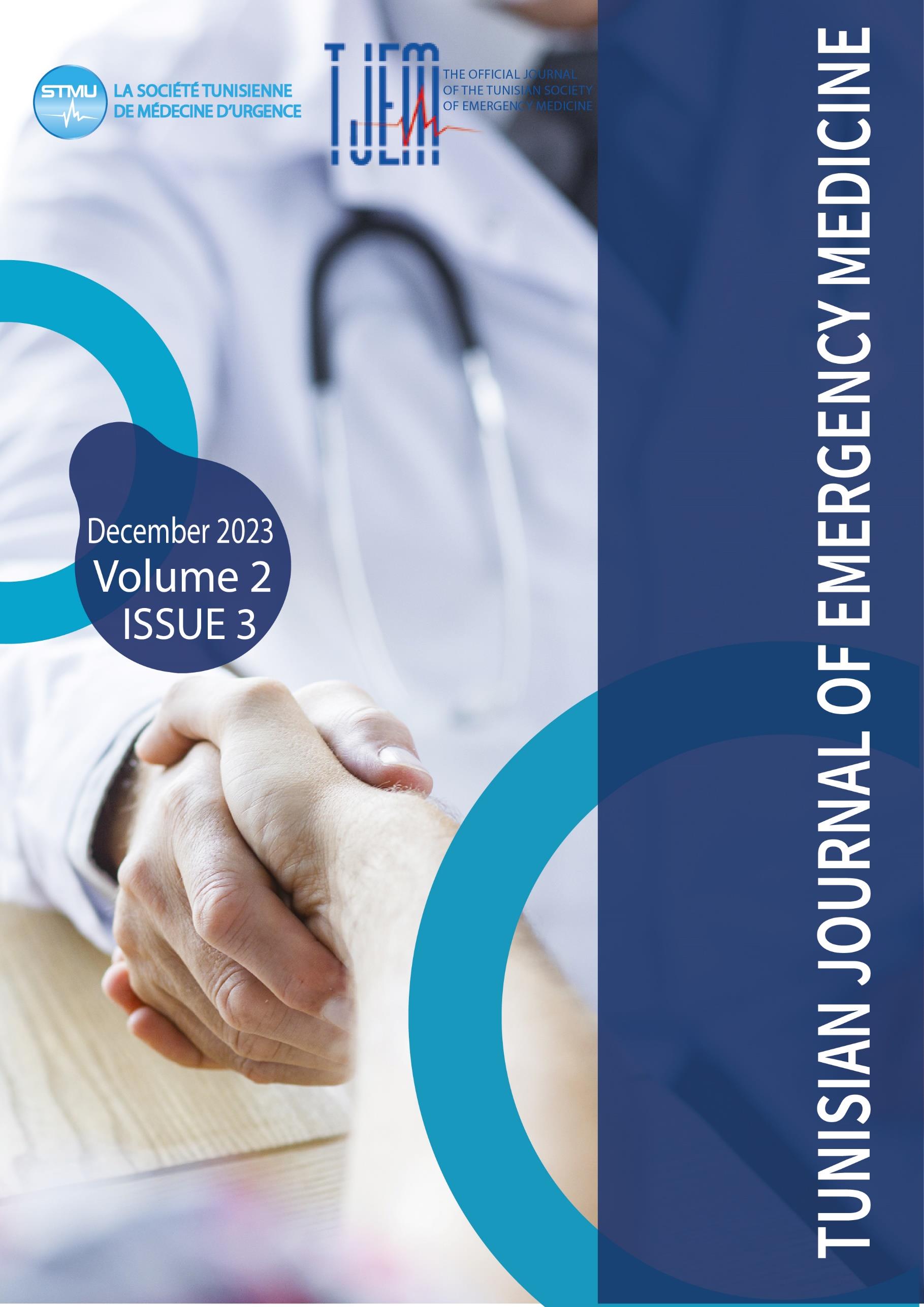Cade oil poisoning in pediatrics: about 12 cases
Manel Weli 1 ; Mariam Jmal 2; Marwa Damak 2; Boutheina Ben Amar 2; Olfa Chakroun 2; Noureddine Rekik 22, Abdelmajid Mahfoudh
DOI:
https://doi.org/10.0000/qcv2mb74Keywords:
Cade oil, Poisoning, Emergency, OutcomesAbstract
Traditional therapy is a practice that is attracting more and more people, thus reinforcing the crisis of confidence between patient and treatment.
In this context, we propose to study the Tunisian recourse to the use of a type of tar "cade oil" advised sometimes by charlatans by habits and beliefs.
The diagnoses retained in these patients in association with tar poisoning were acute dehydration and febrile gastroenteritis. No specific treatment or antidote for tar was administered. The evolution was favorable for ten patients and fatal for two children.
The use of cade oil is currently rapidly growing. Its irrational use leads to serious, even fatal adverse events as noted in the literature and observed in our study. Preventive measures are required, including awareness-raising action: information and communication, Scientific action
Health action Regulatory action Legal action
Downloads
Published
Issue
Section
License
Copyright (c) 2023 Tunisian Journal of Emergency Medicine

This work is licensed under a Creative Commons Attribution-NonCommercial-ShareAlike 4.0 International License.
How to Cite
Similar Articles
- Dorra Loghmari , Epidemiological and prognostic factors associated with road traffic accidents occurring in the Center East of Tunisia. , Tunisian Journal of Emergency Medicine: Vol. 2 No. 3 (2023): TJEM Vol2 Issue3
- olfa DJEBBI, Acute cerebral insults in the emergency department: epidemiology and predictive factors of highly sensitive troponin level’s increase , Tunisian Journal of Emergency Medicine: Vol. 2 No. 3 (2023): TJEM Vol2 Issue3
- Ikhlass BEN AICHA, Importance of Simulation in setting up ultrasoundguided vascular access , Tunisian Journal of Emergency Medicine: Vol. 2 No. 2 (2022): TJEM Vol2 Issue2
- Rym KARRAY, Acute myocarditis complicating severe chloralose intoxication: A case report , Tunisian Journal of Emergency Medicine: Vol. 2 No. 2 (2022): TJEM Vol2 Issue2
- Olfa chakroun-walha, Overview of the post-night shift syndrome in the COVID-19 pandemic era: predictors in a North African sample of physicians , Tunisian Journal of Emergency Medicine: Vol. 2 No. 3 (2023): TJEM Vol2 Issue3
- Management of mass disasters related to the sinking of clandestine immigrants , Tunisian Journal of Emergency Medicine: Vol. 2 No. 2 (2022): TJEM Vol2 Issue2
- Dorra Loghmari , The beneficial learning by simulation in the acquisition of non-technical skills among medical students , Tunisian Journal of Emergency Medicine: Vol. 2 No. 3 (2023): TJEM Vol2 Issue3
- Hanen GHAZELI, De Winters ST-T syndrome: an early sign of STsegment elevation myocardial infarction (A case report) , Tunisian Journal of Emergency Medicine: Vol. 2 No. 2 (2022): TJEM Vol2 Issue2
You may also start an advanced similarity search for this article.
Most read articles by the same author(s)
- Olfa chakroun-walha, Overview of the post-night shift syndrome in the COVID-19 pandemic era: predictors in a North African sample of physicians , Tunisian Journal of Emergency Medicine: Vol. 2 No. 3 (2023): TJEM Vol2 Issue3
- Fatma MHIRI, Aimen Dammak, Faiza Safi, Oumaima KHARDENI , Faten DHOUIB, Olfa chakroun-walha, Diagnostic Challenges and Treatment Strategies in Axillary Trauma: A Case Report , Tunisian Journal of Emergency Medicine: Vol. 2 No. 4 (2024): TJEM Vol2 Issue4
- Olfa chakroun-walha, Acute myocarditis complicating severe chloralose intoxication: A case report , Tunisian Journal of Emergency Medicine: Vol. 2 No. 3 (2023): TJEM Vol2 Issue3
- Olfa chakroun-walha, Orchis satyrium; an intoxication by a medicinal herb , Tunisian Journal of Emergency Medicine: Vol. 2 No. 2 (2022): TJEM Vol2 Issue2

